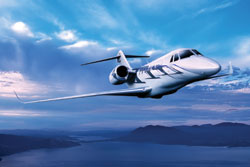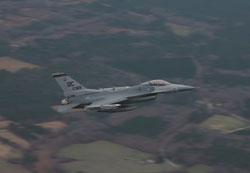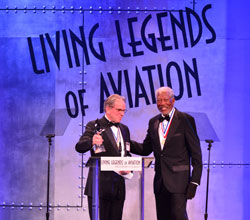Pilot Briefing
News from the world of general aviation
Is light-sport industry signaling a turnaround?
Record-setting days took place at the eight-year-old Sebring U.S. Sport Aviation Expo national showcase for Light Sport aircraft in January. Better news yet for sellers of the three dozen aircraft on display, were visitors in a buying mood. Several manufacturers reported multiple contract signings.
“This is the best ever,” said Art Tarola of AB Flight LLC in Allentown, Pennsylvania, who reported strong interest in the Harmony LSA, Evektor’s newest entry in the market. “We haven’t had this interest, and this level of sales, since 2007. People are tired of being afraid.”
There were innovations to be found among some 160 exhibitors, such as the electronic ignition developed by Champion Aerospace and Lycoming for the Lycoming E-233 powerplant. Fredrick J. Schieszer, a consultant for Renegade Light Sport, boldly predicted it would spread through the LSA market, and become the new standard for Part 23 aircraft within five years—marking the beginning of the end for the magneto.
Light Sport aircraft are to this crowd the cutting edge, where designers can innovate and test new technologies free of the requirements of FAA certification under Part 23. Lycoming’s 115-horsepower E-233 engine may prove a case in point.
For most vendors, optimism was a little cautious. There remains economic uncertainty; financing is difficult to obtain at best for flight school and leaseback purchasers, and many potential buyers are still waiting on the sidelines. And the industry itself, crowded with more than 80 aircraft makers, is still working to separate the performers from the pretenders.
But a sense of maturity is beginning to develop as manufacturers deliver ever more sophisticated offerings.
Not too much maturity, mind you. Words like “cool,” “neat,” and “fun” rolled from many smiling mouths. AutoGyro USA was among the busiest demonstrators, with an MTO Sport and Calidus swooping around the field. They certainly caught the eye of many visitors, along with a replica three-quarter-scale T–51 Mustang by Titan Aircraft that comes in kits, with LSA and non-LSA variants.
On the fixed-wing side, which accounts for about 80 percent of the LSA market, buyers took long, hard looks at many contenders.
“These are real airplanes,” Schieszer said. “Don’t you think this is going to create a resurgence in flying? This is fun!” —Jim Moore
 Favorite GA aircraft ever? Madness!
Favorite GA aircraft ever? Madness!
In the spirit of the NCAA’s March Madness, AOPA is running the “all-time favorite challenge,” a bracket contest that lets you pick the favorite general aviation aircraft. Sixty-four iconic aircraft have been selected to compete—did yours make the cut? On March 12, head-to-head matchups will open for voting on AOPA Online, with a new slate of brackets becoming available for voting each day until the fleet narrows to the champion. Check out the brackets and sign up for a reminder email. Come on, Bonanza fans—make sure those Piper Cubbies don’t get the better of you.
Citation Ten makes first flight
 Cessna’s new Citation Ten has made its first flight just 15 months after being announced at the 2010 National Business Aviation Association convention. The flight lasted more than two hours and included tests of stability and control, handling qualities, and functional operations. The latter involved checks of the autopilot and autothrottle systems, engine operations, and avionics.
Cessna’s new Citation Ten has made its first flight just 15 months after being announced at the 2010 National Business Aviation Association convention. The flight lasted more than two hours and included tests of stability and control, handling qualities, and functional operations. The latter involved checks of the autopilot and autothrottle systems, engine operations, and avionics.
“All systems functioned as expected, including the Garmin G5000 avionics system,” said Michael Vogt, Cessna’s engineering test pilot who flew the Ten prototype. “We are looking forward to a successful flight test program and FAA certification.”
The Ten is an upgraded version of the Mach 0.92 Citation X, which it will replace. The Ten is 15 inches longer than the Citation X, can be configured to seat up to 11 passengers and two crew, and has Cessna’s new Clarity touchscreen-controlled cabin entertainment system.
The Ten also features two Rolls-Royce AE 3007C2 twin-shaft turbofan engines of 7,000 lbst each. This power should give the Ten a maximum cruise speed of 527 knots and a takeoff distance of 5,150 feet. The new engines’ fuel efficiency should allow for a maximum range of 3,242 nautical miles.
Cessna says the Ten is on track for certification in mid-2013, with first deliveries expected in the second half of 2013. —Thomas A. Horne
Test Pilot By Barry Schiff
- With respect to a METAR (weather report for an airport), what is the difference between mist (BR) and fog (FG)?
- True or False: A pilot flying an airplane at a true airspeed of 80 knots is attempting to fly a true course of 360 degrees at a time when the wind is from 270 degrees at 80 knots. It is impossible for the pilot to reach his destination.
- During an instructional flight over Oahu on December 7, 1941, Cornelia Fort and her student were shot at by a Japanese aircraft approaching Pearl Harbor. What type of training aircraft were they flying?
- A pilot is at an indicated altitude of 5,000 feet with his encoding altimeter set to 30.12 inches at a time when it should be set to 30.32. An air traffic controller viewing the transponder return on his radar screen will believe the aircraft to be at
a. 4,800 feet.
b. 5,000 feet.
c. 5,200 feet.
d. 5,400 feet. - From reader John Schmidt: Alaskan bush pilots use the slang expression, Bear Insurance No. 1, to mean a gun sufficiently powerful to take down a bear (when necessary for survival). What is meant by Bear Insurance No. 2?
- A pilot is located at 37 degrees 47 minutes 17 seconds North and 119 degrees 3 minutes 24 seconds West. He wants to fly to a point that is diametrically opposite on the other side of the world. What are the geographical coordinates of his destination?
- In 2005, Connecticut became first to adopt an official state airplane, the Vought F4U Corsair. The second and only other such state is Pennsylvania, which made the obvious choice of designating the ________ as its official state airplane.
- The Cessna 172 has only one static port, and it is on the left side of the fuselage. If a forward slip is performed at a given indicated airspeed, which is safer, a left slip or a right slip?
National Aviation Hall of Fame announces 2012 enshrinees
The National Aviation Hall of Fame has unveiled the four people who will be enshrined in 2012 in recognition of their aviation achievements.
Geraldyn “Jerrie” Cobb, a flight instructor and air race champion, was the first woman to successfully complete the astronaut testing protocol designed for the Mercury 7 astronauts.
Keith Ferris is an aviation artist, historian, lecturer, and inventor. His mural of the B–17 Flying Fortress fills a wall in the National Air and Space Museum’s World War II aviation exhibit in Washington, D.C.
The late Lt. Gen. Elwood R. “Pete” Quesada helped to develop and successfully demonstrate air-to-air refueling in 1929. He later helped to establish and was head of the FAA.
The late Richard T. Whitcomb, an aeronautical engineer who spent most of his career at NASA’s Langley Research Center, developed the Area Rule, in which the shape of a fuselage can be changed to reduce the aircraft shock wave drag that occurs near the speed of sound. He also developed the supercritical airfoil and winglets. —Jill W. Tallman
Things you never want to see in DC
The F–16 suddenly appears off our left wing. It wags its wings and its engine, in afterburner, shakes the sky like an aerial earthquake. An identical airplane that trails a few miles behind and slightly above us, however, isn’t visible to us at all. It’s there to intervene if we take some sort of hostile or evasive action—which we are not.
 We are along with the Civil Air Patrol in a 120-knot GippsAero GA8 Airvan on an aerial exercise that gives the U.S. Air Force F–16 pilots based at Andrews Air Force Base practice at identifying and tracking slow-moving GA aircraft near the Washington, D.C., area. The U.S. military regularly practices these intercepts in aircraft ranging from helicopters to supersonic fighters. This particular exercise took place over Maryland’s Eastern Shore so as not to cause panic in the national capital.
We are along with the Civil Air Patrol in a 120-knot GippsAero GA8 Airvan on an aerial exercise that gives the U.S. Air Force F–16 pilots based at Andrews Air Force Base practice at identifying and tracking slow-moving GA aircraft near the Washington, D.C., area. The U.S. military regularly practices these intercepts in aircraft ranging from helicopters to supersonic fighters. This particular exercise took place over Maryland’s Eastern Shore so as not to cause panic in the national capital.
As CAP pilot John Henderson flew along a triangular route at 3,500 feet at the base of Restricted Area R-4006, the F–16s came at us from the southwest. Their transponders were on, so they showed up as fast-moving white blips on the Airvan’s Garmin MX20 display. Flight leader Lt. Col. Christopher Hardgrave simulated broadcasting on the guard frequency of 121.5 MHz to determine whether the intercepted aircraft’s radio had failed. Hardgrave rocked his wings and turned away, signaling for us to follow. We didn’t, so he repeated the process. On the fifth pass, he crossed our path from below in a hard, climbing turn, with the engine in afterburner and vapor condensing at the wing roots. This aerial “head butt” was an impressive sight, and one that no GA pilot wants to see except by prior arrangement.
Later we flew deep into the Flight Restricted Zone (FRZ), the inner sanctum of the Washington Special Flight Rules Area, and got “sparkled” by a ground-based Visual Warning System. The rapid-fire series of red lights placed within the FRZ is meant as a last-chance wake-up call for errant pilots, telling them they’re somewhere they shouldn’t be. Take a look at the accompanying video—and plan never to see these Washington sights for real. —Dave Hirschman
‘Pilot Tips’ now on AOPA Live
Goodyear Aviation is sponsoring a series of online videos that provide valuable tips for aircraft owners. These videos take viewers to Akron, Ohio, home of the Goodyear blimp, to meet experts from the company, who discuss topics such as fleet management, tire inspection, and share other advice on taking care of your aviation tires. To view the videos, go online and click on “Pilot Tips” on the right.
TEST PILOT ANSWERS
- They are essentially the same phenomenon. It is called fog when visibility is less than 5/8 of a mile. It is called mist (thin fog) when visibility is 5/8 of a mile to less than 7 miles.
- True. It would be nice if an airplane could tack the way a sailboat does, but it cannot. Try solving this problem by plotting a wind triangle.
- Fortunately, the Japanese pilot missed the Interstate Cadet. The 1970 motion picture, Tora! Tora! Tora!, erroneously showed the trainer to have been a Stearman.
- The actual altitude of the airplane is 5,200 feet, which is the altitude shown on the controller’s radar screen (irrespective of the altimeter setting used by the pilot).
- Bringing along a crewmember or passenger who runs more slowly than you do.
- 37 degrees 47 minutes 17 seconds South and 60 degrees 56 minutes 36 seconds East. The destination must be as far south of the Equator as the departure point is north, and the longitude must change by 180 degrees.
- The venerable Piper J–3 Cub was manufactured in Lock Haven, Pennsylvania, between 1937 and 1947.
- During a left slip, ram air from the left enters the static port and pressurizes the static line to the airspeed indicator. This reduces indicated airspeed and is a safe-side error. During a right slip, IAS is greater than what it should be and is not as safe.
‘Academy Awards’ of aviation conferred
On January 24, a star-studded group of the industry’s luminaries, visionaries, and lifelong devotees received recognition from the Living Legends of Aviation organization at a Beverly Hills, California, event sometimes referred to as the Academy Awards of Aviation. A Living Legend of Aviation Award was presented to Jeppesen CEO and President Mark Van Tine in recognition of his leadership role in the industry, and AOPA Pilot columnist Barry Schiff joined eight other inductees as 2012 Living Legends.
“SkyTalker” Danny Clisham hosted the annual ceremony that also serves as a fundraiser for the nonprofit Kiddie Hawk Air Academy.
 Living Legend Tony Bill, left, and Morgan Freeman.
Living Legend Tony Bill, left, and Morgan Freeman.
Van Tine received his award from Pete Bunce, president and CEO of the General Aviation Manufacturers Association.
“Mark Van Tine set his sights on revolutionizing the way pilots plan and manage their flights,” Bunce said. “Mark led his team through the development of innovative and reliable aviation applications that have revolutionized the way navigational information is managed in the cockpit. He is an extraordinary leader, deeply respected by his employees and industry colleagues.”
Van Tine, who has been with Jeppesen, a Boeing Company subsidiary, for 30 years, said that he considers it his responsibility to carry forward the legacy of company founder Capt. Elrey Jeppesen by focusing the firm on continuing to deliver “transformational information and optimization solutions” for aviation and other modes of transportation.
Aviation Entrepreneur of the Year honors were conferred on Sierra Nevada Corp.’s Eren and Fatih Ozmen. J. Robert Duncan of Duncan Aviation received a Lifetime Aviation Entrepreneur award. Actor and aviator Morgan Freeman was honored with an Aviation Inspiration and Patriotism Award. The year’s Aircraft of Legend Award went to Boeing’s 787 Dreamliner. Aircraft designer Burt Rutan received the Bob Hoover Freedom of Flight Award.
Joining Schiff as new inductees were “Miracle on the Hudson” flight Capt. Chesley “Sully” Sullenberger; aerobatic performers Steve and Suzanne Asbury Oliver; aviation entrepreneur and pilot Jeff Puckett; aviation training personalities John and Martha King; Gulfstream Senior Vice President Pres Henne; and Elon Musk, co-founder of SpaceX and PayPal.
More than 50 Living Legends of Aviation attended the 2012 ceremony. Legends and other celebrities on the guest list included Harrison Ford, Bob Hoover, Tom Cruise, Buzz Aldrin, Clay Lacy, Lynn Tilton, Burt and Dick Rutan, Carroll Shelby, Barron Hilton, Kermit Weeks, Joe Clark, Tony Bill, Julie Clark, and Patty Wagstaff.
—By Dan Namowitz
Tuskegee Airmen documentary available
Now that you have seen the movie, Red Tails—or are waiting for it to come out on DVD—get the documentary that served as research for it.
In Their Own Words: The Tuskegee Airmen, produced by Bryton Entertainment, is available online (Walmart’s website showed it for $13 but was out of stock; Amazon.com reported it in stock for $10.97).
Red Tails director Anthony Hemingway said the documentary provided the crew and actors with unique insight into the exploits of the 332nd Fighter Group.


